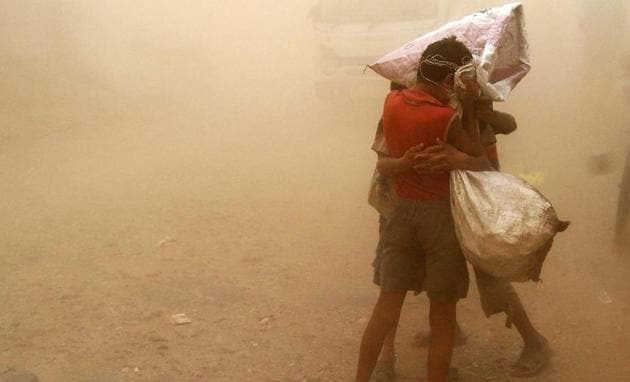The SC order on Aravalli is not just about illegal mining
It must trigger a national debate and discussion not just on air pollution but also the rising threat of desertification
Last week, a Supreme Court Bench, comprising Justices Madan B Lokur and Deepak Gupta, directed the Rajasthan government to immediately stop illegal mining in a 115.34-hectare area in the Aravalli range, which straddles the states of Rajasthan, Haryana, Delhi and Gujarat. The apex court said the disappearance (“flying away with hills like Hanuman”) of 31 hills of the range in Rajasthan due to illegal (and, therefore, unsustainable) mining could be a reason for the rise in air pollution levels in Delhi.

In its judgment, the Supreme Court, however, did not explicitly mention another service that the three-billion-year-old Aravalli range has been providing north India for millennia: it arrests the eastward march of the Thar desert, thereby minimising the threat of desertification to the National Capital Region (NCR). Desertification is a slow process in which land productivity and resilience steadily decline due to overgrazing, deforestation and unsustainable agricultural practices, mining and climate change. In India, the main reason for desertification is loss of soil cover, mainly due to rainfall and surface run-off.
The situation on the ground is changing at a rapid pace, leaving environmental experts concerned. This summer, Gurugram (Haryana) witnessed an increase in the frequency, longevity and density of sand storms, a sign of desertification. All deserts, including the Thar, are increasing, they warn. A study released earlier this year by the Dehra Dun-based Wildlife Institute of India (WII) also said the same. The threat of desertification is real for south Haryana, thanks to decrease in open forest cover in Aravalli range over the last three decades. This deforestation of the range — which leads to less moisture in the air — leads to sand storms, and they might get worse if the pace of degradation continues.
In fact, desertification is fast becoming a pan-India problem. In April, speaking at the Asia-Pacific Regional Workshop of the United Nations Convention to Combat Desertification, the Union environment minister, Harsh Vardhan, said India loses 23 hectares of dry land to drought and desertification every minute. This leads to a loss of 20 million tonnes of potential food grain production. Vardhan also spoke about achieving Land Degradation Neutrality by 2030, which means that the amount and quality of land resources to support the ecosystem and enhance food security remains stable or increases within a specified time and place.
The 2017 State of the Environment report, published by the Centre for Science and Environment, New Delhi, said in eight states — Rajasthan, Delhi, Goa, Maharashtra, Jharkhand, Nagaland, Tripura and Himachal Pradesh — around 40% to 70% of land has undergone desertification. It also revealed that 26 of 29 Indian states have reported an increase in the area facing desertification in the last 10 years. This increasing desertification of India’s soil is a fundamental threat to agriculture, and the recent countrywide farmer protests show how it can affect not just local and national politics, but also state finances (debt waivers).
One way of stalling this process is by planting trees on a massive scale. The Centre has given a tree plantation target and states are competing with each other to meet this. This is a good thing, but two questions need to be asked: Whether states have adequate number of saplings vis-a-vis the number they are claiming, and second, how do they plan to take care of the plants so that they don’t die once the drive is over?
Experts such as former Indian Forest Service officer, JV Sharma, who now heads the forestry and biodiversity division at The Energy and Resources Institute, New Delhi, say that while India has a strong “policy and regulatory regime”, there is a lack of “political will, finance, and capacity building of those undertaking such drives to achieve sustainable development of forests to implement these green policies and regulations”. He also says that third party assessment of the implementation of conservation and afforestation activities is need of the hour to arrest degradation and loss of quality of forests and biodiversity.
Along with these plantation drives, the pace of desertification can be reversed by introducing water management practices, community participation, and sustainable and climate smart agricultural practices. But first there is an immediate need to stop over exploitation of resources, as the Supreme Court order on the Aravalli hills has said.
@kumkumdasgupta






